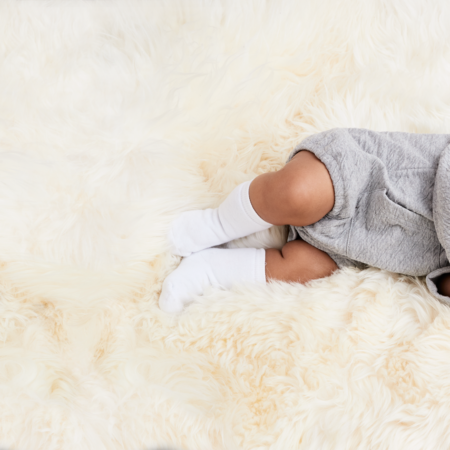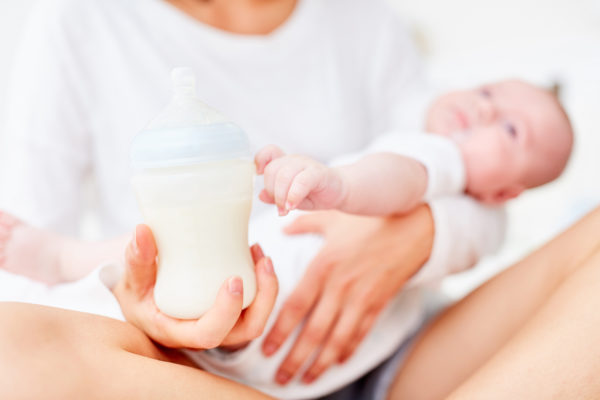You’re browsing through the baby shop, online cart ready to go and then it hits you: You actually have no idea what you really need to get for your baby. Sound familiar?
Yep! What do I need to buy for my new baby?
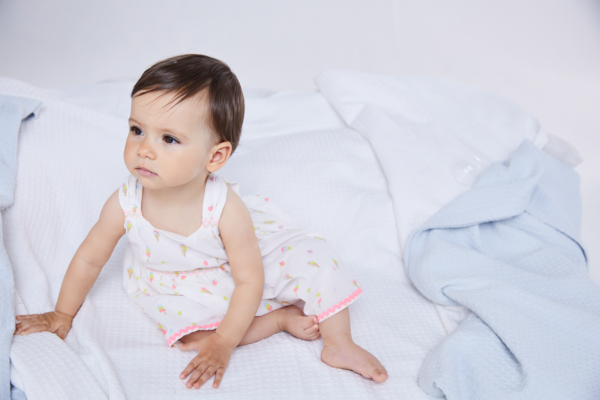
There’s more than enough to do when prepping for your new baby’s arrival – not least of which is hitting the shops and trawling the internet for all of those new baby essentials.
The sheer volume of “stuff” a teeny tiny newborn needs can feel overwhelming and costs can add up quickly. Surely all they really need are nappies, a place to sleep and a blanket to be bundled up in?
Well, while you can’t go quite as minimal as this, it’s definitely the case that not everything in your local baby shop is a necessity. In reality, there are some newborn baby essentials, some nice-to-haves and plenty of baby products you don’t need to spend your money on.
You might not realise yet that many of the items you thought you wouldn’t be able to live without – like white noise machines, wipe warmers and snot suckers – aren’t really all that necessary. The last thing you want is to be swimming in mounds of useless baby-related clutter for years to come.
So, let us help make your job as a new parent a whole lot easier. Our checklist below should be enough to see you through the first few weeks and months of your baby’s life.
Clothing essentials for your newborn
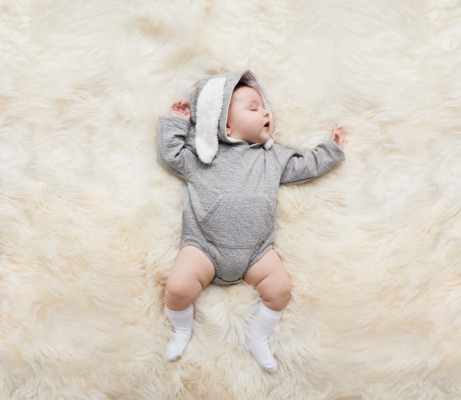
Guys, it doesn’t get any cuter than shopping for itty-bitty baby socks. But before we cover what clothes your newborn baby will need here’s a quick heads up on a few important things:
- Baby clothes sizing is a tricky beast. Baby clothes sizes usually work by age, but because there’s very little consistency across baby clothes brands, it’s also worth checking the weight or height guidelines listed to get a better idea of the fit.
- When it comes to clothes, you don’t know how big or small your baby will be until they’re here. And they can grow really fast. Many babies grow out of newborn or 0-3 clothes in no time at all, while some will fit into their newborn clothes for months.
- Always think comfort over style when it comes to buying baby clothes. We recommend 100% cotton over synthetic baby clothing, as it’s super soft, snuggly, absorbent and breathable – in short, the ideal fabric for your baby’s delicate skin.
- If you can believe it, dry-clean-only baby clothes are actually a thing. Avoid them like the plague!
- It’s also worth stocking up on outfits in the next size up in advance. You can always roll up the sleeves if something’s a bit big. And remember, clothes usually make for popular baby gifts, so you might not need to buy too much to begin with.
Now, onto the newborn baby clothing items you’ll definitely need:
1. Bodysuits
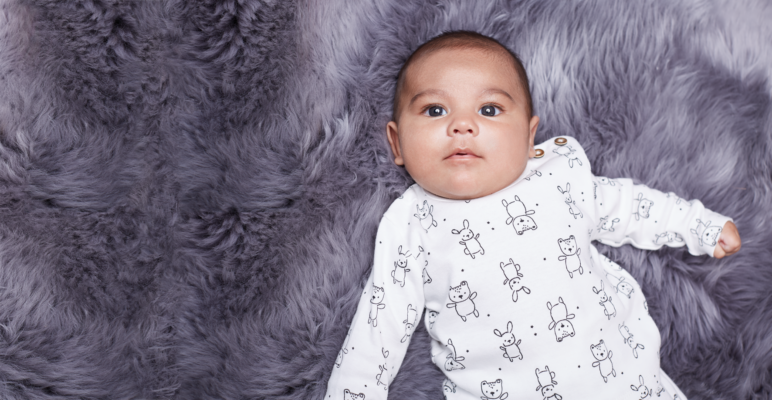
Otherwise known as babygrows or onesies, babies’ bodysuits are essentially daytime pyjamas (yep, your baby is basically living the dream!) It’s hard to have too many of these, with all those lovely poop explosions and spit ups that await you. It really depends on how often you like to do your laundry, but because babies tend to go through more outfit changes in one day than Mariah Carey does at one of her concerts, eight bodysuits should be enough to tide you over.
Opt for a mix of short and long sleeves too. All-in-one bodysuits that come with the little feet attached are a great no-fuss option too – no need to hunt for a matching set of socks! Be sure to have different sizes on hand so you can keep up with your growing baby. You can opt for prints and patterns or keep it simple with block colours or classic white.
2. Sleepsuits
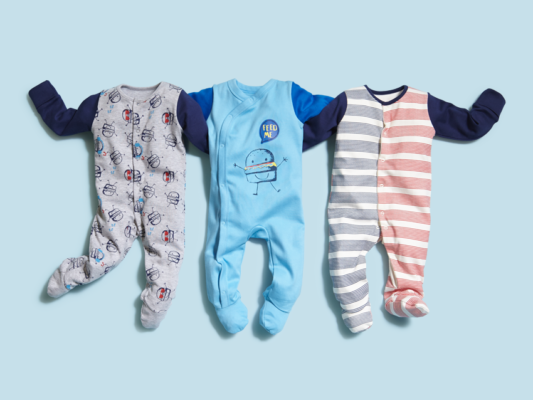
Steer clear of sleepsuits that you have to button – buttons require time and patience – and look for speedy snaps and zippers that open more easily at the bottom (for those ninja-level nappy changes) instead. It’s a good idea to stock up on at least six of these in each size, since you’ll likely be going through at least one a night.
Durability is also key here – you’ll want sleepsuits that can hold up to repeated messes and washings. And don’t forget to pick up a packet of baby washing detergent next time you’re doing the weekly shop!
3. Vests and leggings
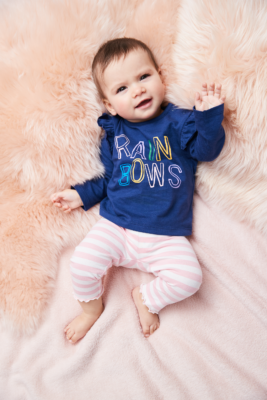
Babies don’t need to dress all fancy. A mix of short and long-sleeved tops (eight in each age range) are perfect when paired with some stretchy-waist cotton leggings for pretty much any occasion.
Go for the wraparound or envelope-style vest tops, which are easier to pull on over your baby’s head.
4. Caps and mittens
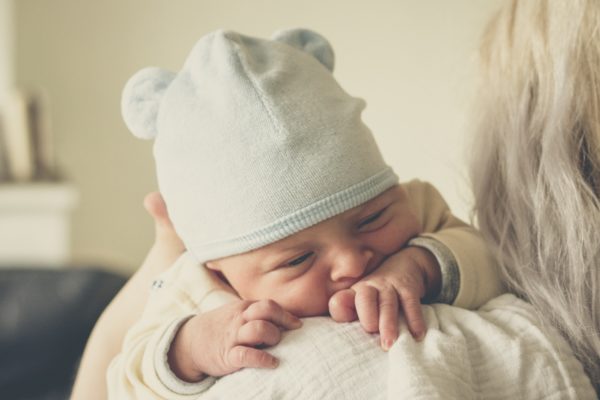
Newborns get cold easily, with most of their body heat escaping from their head, so a couple of sets of hats and mittens are a great way to keep your little one cosy. We like the knotted variety as you can easily reknot it to for your baby’s noggin as they grow. You’ll also need a wide-brimmed sun hat if you have a summer baby.
Mittens (go with the elasticated wrist variety, which are less likely to slip off) are a great way to scratch proof your little one – especially if you don’t have bodysuits with built-in hand covers.
5. Socks (and lots of them!)
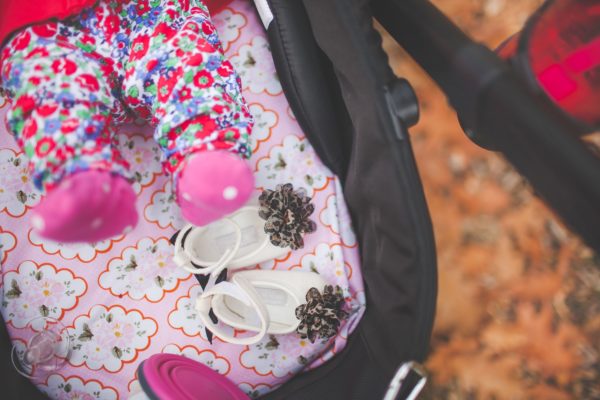
Keeping your baby’s tootsies warm in the colder months is a snap with a set of comfy cotton socks. We recommend stocking up on a few multipacks of these because as we all know, one sock always seems to disappear with every wash.
6. Outer layers
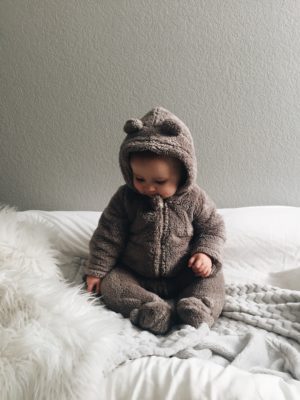
An extra layer of clothing always comes in handy when you’re out and about with your little one. Babies are not exactly the biggest fans of having clothes pulled over their heads (and they won’t be shy about letting you know that), so a button-down cardigan or two, rather than a jumper, is the way forward here.
If you have a winter baby, a zippered pram suit or coat will also be a key piece in your baby’s wardrobe.
Pro tip: Learn what to pack in your hospital bag for delivery with Very’s hospital bag checklist. We’ve included essentials for mum, baby and partner!
Travel essentials for your baby
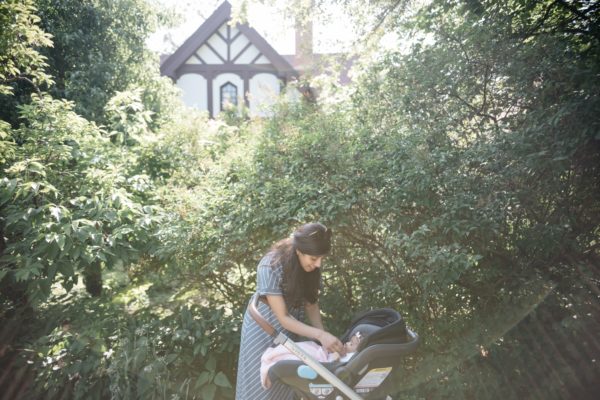
Near the top of your baby shopping list is likely a set of wheels, so you and your little one can get out and about. Ultimately, the mode of baby transport you use will depend on your personal preference and on that of your baby.
And here’s the kicker – it will also likely be one of your biggest financial outlays as a new parent.
7. Rear-facing car seat
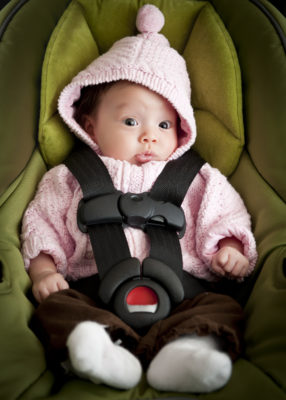
This one is non-negotiable – you won’t be allowed to leave the hospital without a car seat. Happily, there are a range of brands out there to suit pretty much every budget. Make sure you go with one that meets the latest RSA and EU safety standards and is compatible with your vehicle. An infant car seat that comes with an Isofix base is usually recommended over a belted option.
Word of warning: Car seats are one baby essential to avoid getting second hand, if at all possible. These come with expiration dates, for starters, and it’s hard to know on sight whether the car seat has been damaged or dropped in the past. If you do opt for a second-hand car seat, then be sure to double check whether it’s been recalled at any point.
8. Pram / buggy / travel system
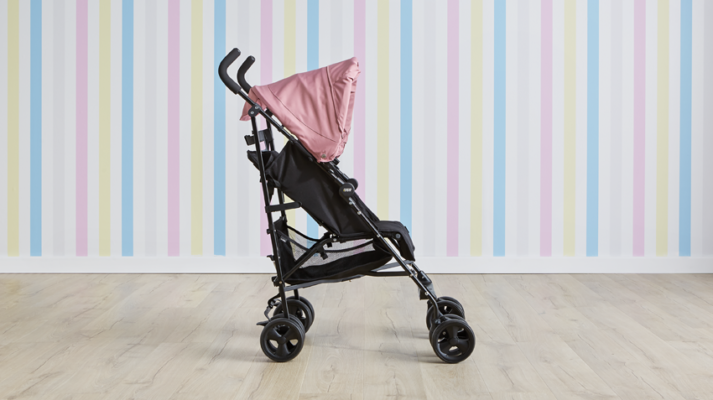
A pram is designed specifically for newborns and younger babies up until about six months old. Prams tend to be forward-facing and a little heavier and sturdier than a buggy (also known as a pushchair or stroller), which are their collapsible, more compact counterpart.
Buggies tend to be more suitable for older infants, are easier to maneuver one handed and come with adjustable settings so your baby can either lie flat, recline or sit up slightly.
Many brands carry pram and buggy combos, which are commonly called a travel system and can last you from birth until your little one turns three.
When it comes to the pram vs. buggy vs. travel system debate, the type you choose will likely depend on a few different factors. Are planning on taking your pram off road? How about jogging? Or on public transport? How roomy is your boot? Is it easy to fold down quickly?
Regardless of what option you go with, it’s important for newborns to lie flat to help their growth and development, so you’ll want to invest in something that fully reclines and offers cover from the sun (and let’s be real here, the rain).
9. Baby carrier
Want to skip the hassle of lugging a pram around on public transport or running errands, or simply snuggle your baby hands free while catching up on chores?
Babies like to be held a lot in the first couple of months, so a baby carrier is hands down one of the best purchases you can make as a new parent. You can opt for one of many different styles of baby carriers, including wraps and slings, as well as both soft and structured carriers.
Sleep essentials for baby
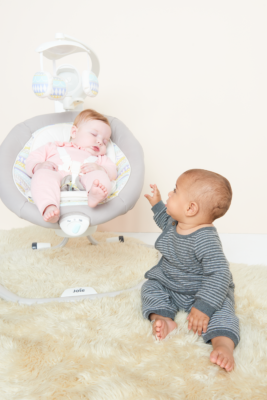
As you know, sleep becomes a precious resource post-baby. Luckily, there are some baby items that can help your little one get all the sleep they need.
Here are our top baby sleep products for the first few months of your baby’s life:
10. Co-sleeper / cot / moses basket
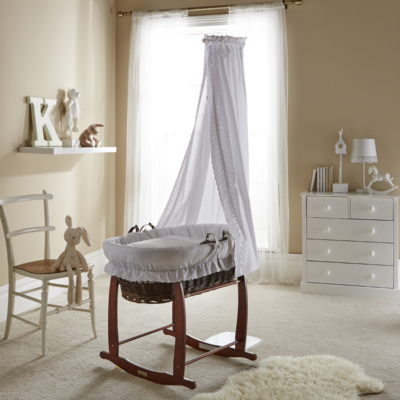
Newborns like to sleep (a lot!), so the right sleeping space for your little one is a proper essential.
Some parents prefer to start with a moses basket (Sometimes referred to as a bassinet) for newborns as they’re more portable (meaning baby can nap near your during the day) and take up less space, before gradually transitioning into a cot after the first few months.
Others will choose to start their babies in the cot right from the get-go. You can even purchase cots that transition into a toddler bed if you’re looking to save money in the long run. As it’s recommended for baby to sleep in the same room as their parents for the first while, having only a cot could be an issue as it tends to be bulkier than your typical moses basket.
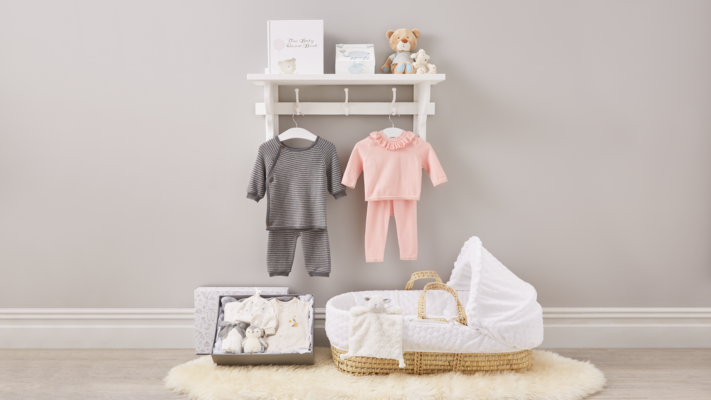
The sleeping space you go for is purely down to personal preference. No matter whether you choose a cot, moses basket or co-sleeper, just make sure that your baby’s sleeping space meets the most recent safety standards.
Other sleeping nice-to-haves include:
- Room thermometer
- Baby monitor
- Swaddle blankets or sleepsacks
- Blackout blind
- Humidifier
Another thing – your baby’s mattress should be flat, firm and bare – no loose blankets or bumpers allowed. Baby sleeping bags are the perfect way to keep your little bug warm and snug at night without restricting movement or covering their face.
And trust us on this one: Babies are messy little things, so you’ll want to have a few waterproof mattress covers handy, as well as a couple of sets of extra bedding to hand (namely, fitted sheets and cellular blankets) for any late-night emergency changes. And while not every baby will love being wrapped up tightly, you might want to keep a couple of swaddling blankets on standby just in case.
Essentials for feeding your baby
As you’re starting to stock up on baby gear, there are some feeding supplies you should pick up as you’re preparing for that hungry newborn to make an appearance. Here are the must haves:
11. Bottle-feeding supplies
Some parents use baby formula full time while others choose to supplement alongside pumping or breastfeeding.
But here’s the rub – there’s no one brand of bottle that works for every baby. Similarly, teats come in a variety of sizes, shapes and flow speeds so you’ll have to experiment to find the best one for your small one.
So, rather than buying up dozens of one brand of bottles and teats that your baby promptly rejects, try buying a single bottle across a range of different styles to figure out which kind your baby prefers. Then, you can stock up like they’re going out of style!
If you’re opting for bottle feeding and formula and want to keep things as minimal as possible, a kettle is just fine. Bottle warmers and sterilisers, while nice extras, are strictly optional.
12. Breastfeeding and pumping supplies
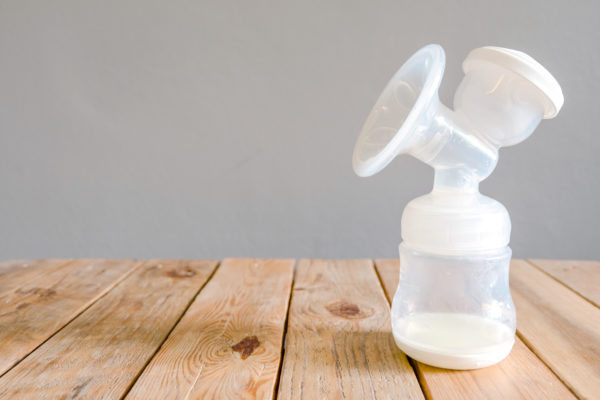
This all depends on whether you choose to exclusively breastfeed, pump, supplement with formula or some combination of each. But if you do pump, then either a manual or electric breast pump and bags to store your expressed milk are worth their weight in gold. Electric pumps can be pricey.
While a thick pillow can work in a pinch, a good, supportive feeding pillow makes breastfeeding easier and more comfortable (as do breast pads and some good quality breastfeeding bras).
13. Burp cloths and bibs
Babies are notorious droolers, so it’s handy to have a bunch of bibs on rotation to keep the neckline of their clothes dry.
14. Rocking chair
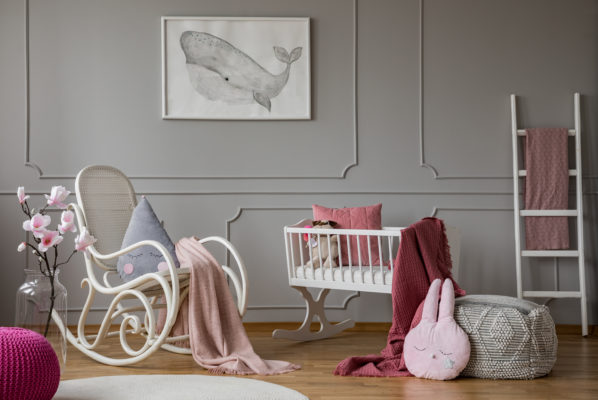
There are most definitely pieces of nursery furniture which you can hold off on buying for the first while, but take it from us – investing in a comfy rocking chair that reclines is an essential.
Your newborn will be waking up every few hours during the night for the first few months. This means lots of nighttime feeds and soothing your fussy baby back to the land of nod. So have one ready to rock (and roll) as soon as you bring baby home from the hospital.
Essentials for changing and bathtime
Here’s a rundown of the top changing and bathtime supplies you’ll need for your new baby:
15. Nappies and wipes
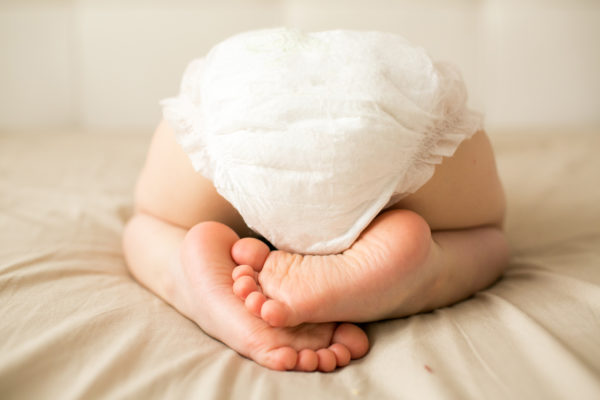
Whether you prefer disposable, cloth, or a combo of both, as a new parent you’ll need lots of these. Babies needs their bums changed upwards of 12 times a day, so make sure you have at least a week’s stock to hand, along with some nappy cream and nappy sacks.
If you’re going the disposable nappies and wipes route, you might need just one pack of the newborn ones to hand. There’s a fair chance your baby might have outgrown them before they’re even born, in fact.
16. Baby bath
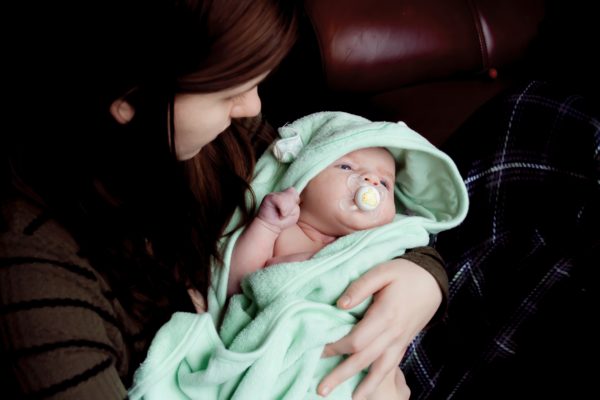
If the idea of a squirming, slippery baby sends you into a cold sweat, don’t fret. Baby baths with a non-slip surface are much safer for your baby, and the ones with a sling or seat insert make bathing your newborn a whole load easier.
For scrub-a-dub time, all you’ll need are some non-abrasive washcloths or a sponge and some mild, perfume-free all-in-one baby wash. And while any smaller, fluffy bath towel will do the job, really, hooded baby towels are a great way to keep your baby’s head warm after they emerge from the water (not to mention they’ll look almost impossibly adorable!)
And because your baby’s skin is so delicate and burns easily, it’s worth picking up a bath thermometer to have to hand.
Pro tip: Don’t forget another newborn must have: the baby grooming kit! Get one that comes with a toothbrush, nail scissors, brush and comb.
17. Changing table / cot top changer or dresser
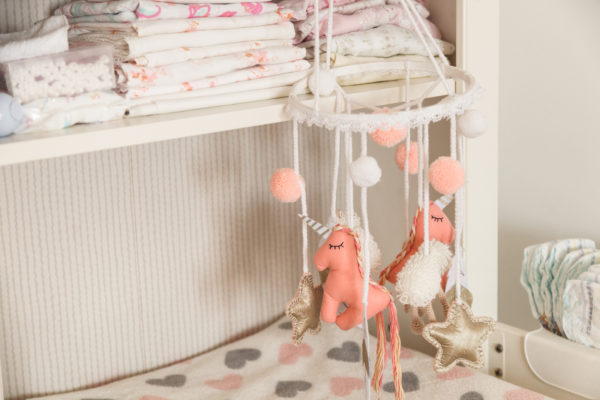
Yes, you can plonk a changing mat down pretty much anywhere you like, but a designated changing station will be easier on your back.
Baby items you don’t need to buy (right away)
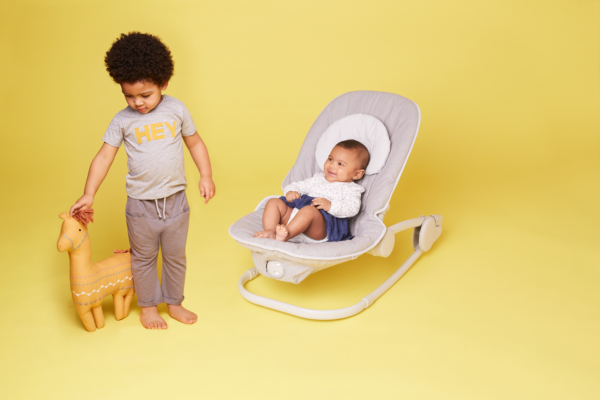
These are things you know you’ll eventually have to buy but by simply holding off on purchasing a few of these items, you can make more informed choices and give yourself more time to shop around (as well as spreading out the cost of your shopping):
- High chair
- Playpen
- Bath toys
- Educational toys
So there you have it – all the necessities for a newborn baby! Hopefully we’ve spared you a last-minute, frantic search through the shops for that overlooked baby item when your little bundle of joy arrives. Now go forth and nail this whole parenting shebang!
If you’re worried that your new baby shopping is going to work out very expensive, why not look into Very’s ‘Buy Now, Pay Later’ options?
And don’t forget, all orders made on Very come with free delivery and returns, so you can shop in confidence!

